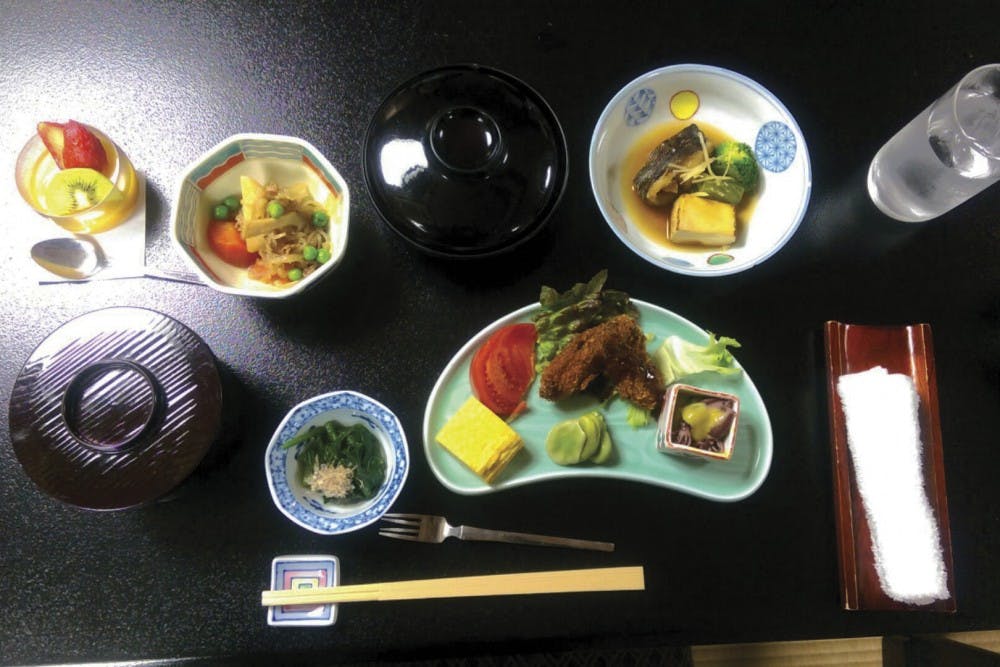
Some Penn students might head to a tropical place for spring break, or just home to relax. But some exceptional students traveled to the other side of the globe.
Two Wharton School professors and 23 undergraduates spent spring break in Japan as part of the KAKEHASHI Project, a cultural program sponsored by the Japanese government.
In its first year of Penn participation, the program aims to promote an understanding of Japan’s economy, society and culture, and to create ties between the nation and the United States. The trip included visits to businesses, sightseeing and work with government agencies.
According to a participant handbook that was given to students by the Japan International Cooperation Center as part of the project, the KAKEHASHI Project is the North American subset of a larger effort by the Japanese government at global cultural integration.
“This trip was business and economics-focused,” Wharton Director of Academic Affairs and Advising Scott Romeika said. “There is a large part of the Japanese economy that is manufacturing, and we saw representation of that in Ichikawa prefecture [where the group spend the majority of its time].”
“I’ve always been really interested in Japan,” Wharton freshman Athena Panton said, adding that she plans to take Japanese language classes at Penn.
The trip focused in part on sparking cultural interest through the use of social media. According to the statement in the participant handbook, students were "expected to proactively disseminate information on Japan’s attractions and contribute to promoting sustained attention to Japan."
“We were looking for ways to capture in the moment what was going on and quick impressions from the different visits we had,” Romeika said. “We wanted to put those thoughts out there so others could see and get excited as well about Japan.”
Students had the task of crafting a strategy to spark interest in Japanese society back at Penn.
“We came up with an action plan on how we’re going to do our part to make Japan and America a little bit more connected,” Panton said.
Plans include future collaborations with the Japanese Student Association and Wharton Asia Exchange.
“We want to help them to become more prominent entities on campus,” Panton said. “[We also hope to] create a mentorship program with MBAs who have gone abroad or are currently living abroad, specifically in Japan but also in other countries.”
Panton wants to help promote Japan and other countries in Asia as study abroad destinations.
“We were talking about how most kids in America considering studying abroad think of Europe because it is a very familiar lifestyle,” Panton said. “Nobody ever really thinks about the Asian countries.”
Another plan includes reaching outside Penn’s campus to interact with the greater Philadelphia community.
“One of the other action plans was to try to connect with other Japanese-Americans in Philadelphia or with the Consulate, to see where we could help serve mutual interests,” Romeika said.
The trip caused students to reflect on differences between Japan and the United States.
“I think what stood out most to a lot of us was company culture,” Panton said. “Something we definitely noticed was in America, as much as people say they’re ‘working on a team’ — I’m putting that in quotes — there’s always that inner side of you that is working toward your own best interests. In Japan, we noticed that everyone is working to better the product and the company selflessly.”
And though the group was only across the Pacific for a week, Romeika believes that the voyage was an important step towards closing cultural divides.
"Building familiarity is part of the bridging process," he said.
The Daily Pennsylvanian is an independent, student-run newspaper. Please consider making a donation to support the coverage that shapes the University. Your generosity ensures a future of strong journalism at Penn.
Donate




